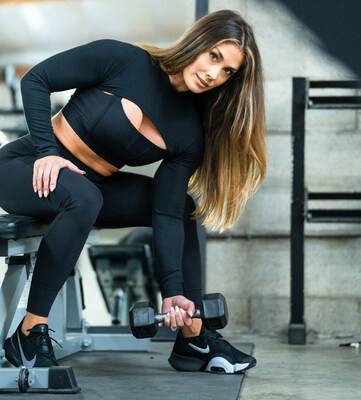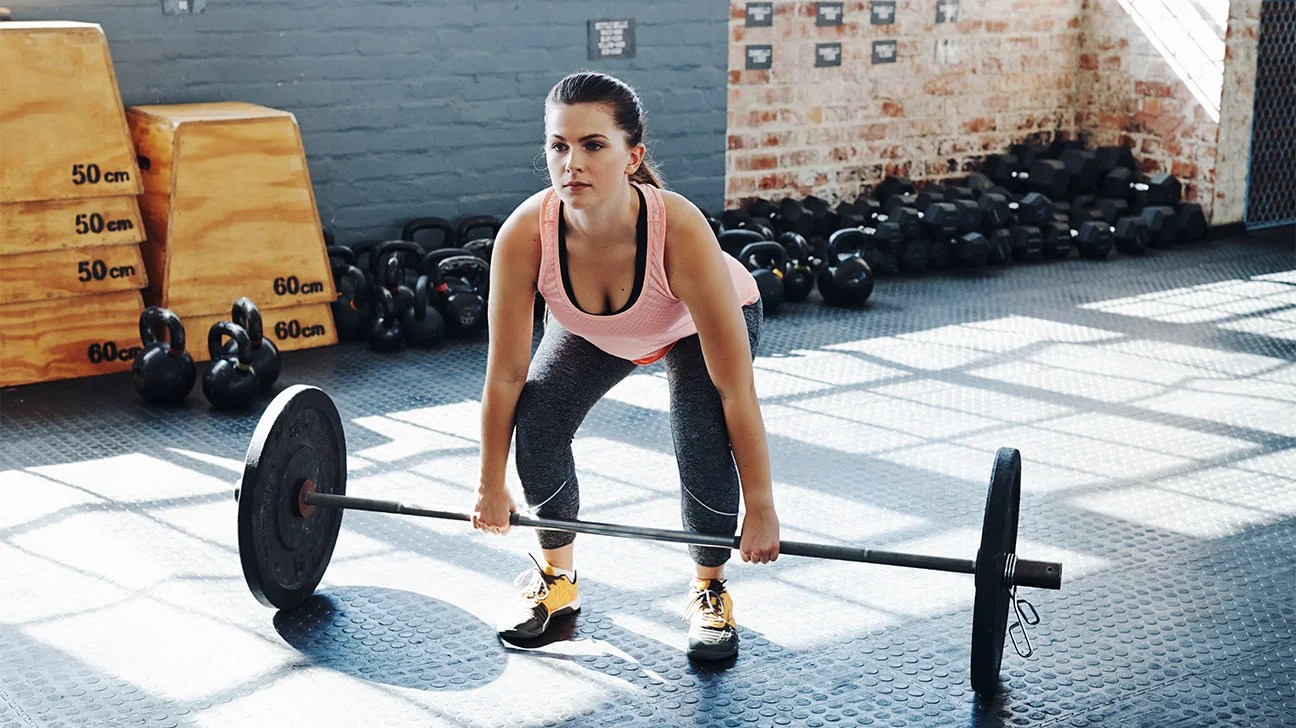Learn the benefits of improving muscular strength and endurance slows bone density loss and ensuring stronger bones and a healthier lifestyle. Engaging in regular strength training and endurance exercises is crucial for diminishing the rate of bone density loss. These activities bolster musculoskeletal health, effectively aiding in the preservation of bone mass.
Maintaining strong bones and muscular endurance is essential, especially as we age. The decline in bone density can lead to conditions like osteoporosis, making individuals more susceptible to fractures. Strength training, involving resistance exercises like weightlifting and endurance workouts, such as running or cycling, stimulates bone remodeling and increases muscle mass.
This process helps in reinforcing the bones, enhancing their density, and postponing the onset of bone-related ailments. Engaging in such physical routines not only supports bone integrity but also improves overall fitness, balance, and posture. Integrating these exercises into your lifestyle is a proactive approach to ensuring healthier, more resilient bones while also elevating your stamina and muscular capability.

Muscle Strength Versus Muscular Endurance
Improving muscular strength and endurance delivers more than just a toned physique. These elements play a vital role in reducing bone density loss. Understanding the difference and impact of both components can lead to a more effective workout routine.
Defining Key Terms
Muscle strength is the power you need to lift heavy objects. Muscular endurance is how long you can move your muscles without getting tired.
Imagine lifting a heavy box. That’s muscle strength. Now think of carrying it upstairs. That’s muscular endurance.
How Both Contribute To Health
| Muscle Strength | Muscular Endurance |
|---|---|
| Builds stronger muscles | Keeps muscles working longer |
| Increases bone density | Improves cardiovascular health |
| Boosts metabolism | Enhances balance and stability |
- Better muscle strength means bones get better support.
- Endurance activities keep blood flowing, strengthening bones over time.
The Connection Between Muscles And Bones
The Connection Between Muscles and Bones is fundamental to maintaining skeletal strength and function. Understanding this relationship reveals how improving muscular strength and endurance can decelerate bone density loss. Engaging in exercises that enhance muscle mass simultaneously benefits bone health, offering a dual advantage for the body’s support system.
Physiology Of Bone Density
The amount of minerals in bone tissue is known as bone density. The bone tissue in the body is constantly absorbed and replaced. Over time, bones can lose density, leading to conditions like osteoporosis. Weight-bearing exercises stimulate bone remodeling, where new bone tissue forms, improving density.
- Bone remodeling responds to physical activity
- Higher peak bone mass reduces future loss risk
- Sufficient dietary intake is crucial, particularly for calcium and vitamin D.
Muscle-bone Interaction
Muscles exert force on bones during activity. This force is a crucial signal for bone formation. Stronger muscles pull harder on bones, encouraging more bone growth. The preserve bone density, focus on exercises like:
| Exercise Type | Benefits |
|---|---|
| Resistance Training | Builds muscle strength and bone mass |
| Weight-Bearing Cardio | Enhances cardiovascular health and stimulates bone growth |
Consistent, targeted movement supports a robust musculoskeletal system. This partnership underlines the importance of integrating strength and endurance training into regular exercise regimes to combat bone density loss effectively.
Risks Of Bone Loss
Bone loss is a natural part of aging, but it poses serious health risks if not addressed.
Muscular strength and endurance exercises play a vital role in slowing this process.
Understanding the risks associated with bone density loss is crucial for maintaining overall health.
Osteoporosis And Fracture Risk
Osteoporosis means “porous bones.” It’s a condition where bones lose density, making them weak and more likely to break.
Falls and fractures become more common, severely impacting life quality.
Strong muscles protect bones by improving balance and posture.
Aging And Bone Health
Our bones get weaker as we get older. Peak bone density occurs around age 30; after that, bone loss begins.
Lifestyle choices can influence how quickly this happens.
Activities that strengthen muscles can help slow down bone density loss.
Regular, targeted exercise supports bones at any age.
It’s essential to start early and continue consistently.
Benefits Of Increased Muscular Strength
Strong muscles matter for your health. Better muscular strength means more than just lifting heavier weights. It affects your whole body. Stronger muscles can slow bone density loss. This means your bones stay stronger for longer. Let’s dive into how boosting your muscle strength can benefit you in daily life.
Injury Prevention
Strong muscles protect your body. They support your joints. This reduces the chance of injuries. When you slip or fall, strong muscles help you regain balance quickly. They act like a shield for your bones and joints.
- Boosts joint stability
- Decreases risk of sprains and strains
- Improves balance and coordination
Enhanced Metabolism
More muscle increases your resting metabolism. This means you burn more calories, even at rest. Your body starts to use energy more effectively. This helps in maintaining a healthy weight.
| Without Muscle Gain | With Muscle Gain |
|---|---|
| Lower calorie burn at rest | Higher calorie burn at rest |
| Slower metabolic rate | Faster metabolic rate |
Role Of Endurance In Bone Health
The Role of Endurance in Bone Health often goes underappreciated when discussing strategies for preventing bone density loss. Regular endurance-focused activities not only boost heart health but also play a critical role in maintaining and improving bone strength. As we age, keeping bones healthy becomes paramount to supporting an active lifestyle. Endurance training, such as walking or swimming, can help in this crucial battle against bone density deterioration.
Chronic Stress And Bone Density
It’s not widely known, but chronic stress can harm your bones. When stress persists, cortisol levels rise, potentially leading to bone density loss. Studies indicate that chronic stress may disrupt the balance between bone formation and resorption, the process whereby the body breaks down old bone.
- Long-term cortisol elevation impacts calcium absorption.
- It can lead to bone mineral content reduction.
- Cortisol might trigger an imbalance in bone remodeling.
Endurance Training And Bone Remodeling
Endurance training could be a game-changer for your bones. Bones adapt to the stresses placed upon them, and endurance activities provide consistent stress that prompts the remodeling process. This involves the replacement of old, worn-out bone with new bone.
| Activity | Impact on Bone Remodeling |
|---|---|
| Jogging | Boosts leg bone density |
| Cycling | Enhances pelvic bone strength |
| Swimming | Supports overall skeletal integrity |
Engaging in regular endurance training helps the body deposit new bone tissue, increasing density and strength over time. The ongoing cycle of stress and recovery that characterizes endurance training is exactly what bones need to stay robust.

Key Exercises For Strength And Endurance
Building muscle strength helps you feel strong and healthy. Strong muscles support bones. Endurance allows you to be active for longer times. Muscles and bones work together. Keeping them in top shape is vital. Here, we explore key exercises to boost strength and preserve bone density.
Resistance Training
Resistance training includes activities that make muscles work against a force. This type of training strengthens muscles and builds endurance. It’s great for slowing bone density loss. Begin with exercises like:
- Squats: Stand with feet hip-width apart. Bend knees and lower back as if sitting.
- Push-ups: Start on the ground. Keep your body straight. Push your body up and down.
- Lunges: Step forward with one leg. Bring both knees to a 90-degree bend by lowering your hips.
Plan resistance training sessions twice a week. Use free weights, machines, or body weights. Remember to rest your muscles for 48 hours between workouts.
Weight-Bearing Activities
Weight-bearing Activities
Weight-bearing exercises make you work against gravity. They’re key for healthy bones. Walking, running, and dancing are perfect examples. They force your bones and muscles to support your weight. Include activities like:
- Brisk Walking: Take fast-paced walks around your neighborhood or park.
- Jogging or Running: Start with a comfortable pace. Increase your distance over time.
- Dancing: Put on music and dance for fun or join a dance class.
Engage in weight-bearing activities most days of the week. Aim for at least 30 minutes per session.
Nutrition For Muscle And Bone Development
Nutrition plays a critical role in building and maintaining muscular strength and bone density. A balanced diet rich in key nutrients is essential. This supports not only the musculature system but also slows the potential decline in bone density. As we look into how food fuels muscle and bone development, certain nutrients stand out for their impact on our body’s internal architecture.
Essential Nutrients And Vitamins
Understanding the essential nutrients and vitamins necessary for muscle and bone health is the first step. Calcium strengthens bones. Protein repairs muscle tissue. Vitamin D helps with calcium absorption. Magnesium plays a role in bone formation. These are all pillars of a bone-friendly diet.
- Calcium: Milk, cheese, yogurt, and leafy greens are calcium-packed foods.
- Protein: Lean meat, poultry, fish, beans, and nuts are great for muscle repair.
- Vitamin D: Sunlight exposure, fatty fish, and fortified foods aid in Vitamin D intake.
- Magnesium: Add spinach, nuts, and whole grains to your diet for magnesium.
Dietary Plans For Strengthening Bones
Creating a dietary plan to enhance bone strength requires strategic food choices. It is not just about adding certain foods. It is about creating a well-rounded diet. Here’s a simple guide to keep in mind:
| Meal Time | Food Suggestions |
|---|---|
| Breakfast | Oatmeal with almonds and fortified orange juice |
| Lunch | Grilled chicken salad with leafy greens |
| Snacks | Yogurt with fresh berries |
| Dinner | Baked salmon with quinoa and steamed broccoli |
Eating several small meals throughout the day ensures constant nutrient supply to your body. Remember to stay hydrated. Water is vital in nutrient transport and chemical reactions in the body.

Credit: m.youtube.com
Building A Sustainable Routine
Building a sustainable routine is the key to improving muscular strength and endurance while fighting bone density loss.
This holistic approach ensures your body adapts gradually.
You minimize the risk of injury and maintain motivation. Let’s dive into crafting a routine that sticks.
Setting Realistic Goals
Start by defining clear, achievable targets.
Muscle building is a marathon, not a sprint.
Set milestones that align with your daily life:
- Short-term targets – weekly exercise sessions
- Mid-term aims – monthly progress assessments
- Long-term objectives – year-end fitness goals
Bite-sized goals keep you on track without overwhelming you.
Incorporating Variety And Rest
Keep your routine fresh.
Introduce new exercises to challenge different muscles.
This helps prevent plateaus.
| Day | Activity | Focus Area |
|---|---|---|
| Monday | Strength Training | Upper Body |
| Wednesday | Cardio | Endurance |
| Friday | Strength Training | Lower Body |
| Saturday | Active Recovery | Flexibility |
Rest is crucial.
It allows your muscles to recover and grow.
Rest days reduce the chance of injury.
Pair workouts with healthy nutrition for the best results.
Following these steps will outfit your routine for success, keeping your muscles strong and your bones dense.
Monitoring Progress And Adjusting Your Approach
Embracing a journey to enhance muscular strength and endurance isn’t just beneficial for your overall fitness, but it also contributes to slowing down the loss of bone density. Monitoring your progress and fine-tuning your strategy as you go can make all the difference. Keep a close eye on your advancements and stay ready to refresh your routine for the best bone health results.
Tracking Strength And Endurance Gains
Seeing progress in your strength and endurance can be incredibly motivating. Let’s look at how you can effectively track these gains:
- Record Your Workouts: Note the weight, reps, and sets for each exercise.
- Test Your Limits: Regularly check your max reps at a specific weight.
- Monitor Your Stamina: Time how long you can perform a certain activity.
- User Technology: Fitness trackers and apps can help log your daily achievements.
Quantitative measures give you clear evidence of improvement, ensuring you stay on the right path for enhancing bone health.
Revising Workouts For Optimal Bone Health
As you monitor your progress, adjusting your workout plan is vital to continue improving bone health. Here’s how to revise your workouts effectively:
- Assess Your Routine: Look for areas needing improvement or variety.
- Increase Intensity: Gradually add more weight or resistance to your exercises.
- Vary Your Exercises: Include a mix of weight-bearing and muscle-strengthening activities.
- Focus on Balance: Incorporate activities that challenge your balance and stability.
These revisions should aim to maintain muscle challenge and promote bone density. Listen to your body and consult a professional if necessary to tailor the best workout plan for your needs.

Understanding Hormonal Influences On Muscles And Bones
Our hormones play a vital role in our body’s ability to build muscle strength and maintain bone density. As we age, hormonal changes can impact these processes. This section will explore the hormones at play and how we can manage them to promote muscular strength and slow bone density loss.
The Role Of Testosterone And Estrogen
Both testosterone and estrogen are crucial for healthy bones and muscles. Testosterone helps to build muscle mass and strength. In contrast, estrogen helps to preserve bone density.
- Use bullet points to make the text easier to scan
- Testosterone increases protein synthesis in muscles.
- Estrogen prevents bone breakdown and loss.
Men and women have both hormones but in different amounts. Women often face a greater risk of bone density loss after menopause due to a sharp decline in estrogen.
Managing Hormonal Changes
Here are some effective strategies for managing hormonal changes:
The table makes it easier to understand and compare strategies| Strategy | Benefit |
|---|---|
| Regular Exercise | Boosts hormone levels that strengthen muscles and bones |
| Healthy Diet | Provides necessary nutrients to support hormone production |
| Sleep Hygiene | Improves hormone regulation, aiding muscle repair |
Regular weight-bearing and resistance exercises are particularly effective. These activities encourage the body to produce more testosterone and estrogen, which in turn supports stronger muscles and bones.
Common Myths About Strength Training And Bone Density
Strength training is a powerful tool for maintaining strong bones. Yet, many people hold false beliefs about its effects on bone density. Here, we’ll shatter some common myths, revealing the truth about strength exercises and bone health.
Debunking Age-related Misconceptions
Many say “I’m too old for strength training” or perhaps “It’s too late to improve my bones” . These statements are myths. It’s been proven that bones can strengthen at any age. Starting a workout plan, even later in life, can be highly beneficial. Here are some myth-busters:
- Myth: Older adults cannot gain muscle strength.
- Truth: Older adults can build muscle and improve bone health with regular exercise.
- Myth: Strength training is risky for seniors.
- Truth: With proper guidance, it’s safe and vital for maintaining bone density.
Clarifying The Impact Of High-impact Exercises
“High-impact exercises are harmful to your bones” is another myth we often hear. High-impact exercises, when done correctly, are not only safe but can be incredibly effective. They stimulate bone growth and improve strength. It’s important to learn the right way to perform these exercises. Certified trainers can provide valuable guidance to ensure safety and efficacy.
- Start with low-impact activities to build endurance.
- Gradually introduce high-impact exercises.
- Focus on form to reduce the risk of injury.
Always consult a professional before starting any new exercise routine, especially if you have pre-existing health conditions or concerns.
Professional Guidance And Support
Strengthening muscles and enhancing endurance are keys to slowing bone density loss. Professional guidance and support play critical roles in this process. Experts can design tailored exercise programs that ensure safety while maximizing benefits. They help maintain motivation and monitor progress over time.
Working With A Physical Therapist Or Trainer
A physical therapist or certified trainer offers invaluable expertise for improving muscular strength and endurance. They assess individual needs and create customized workout plans. These professionals ensure exercises are done with proper form to prevent injuries.
- In-depth assessments to gauge fitness levels
- Creation of personalized exercise routines
- Instruction on correct technique to maximize effectiveness
- Regular adjustments based on progress and feedback
Leveraging Technology For Training Assistance
Technology offers exciting tools to assist in building muscular strength and endurance. Apps and wearables track exercise, rest, and nutrition. They offer virtual coaching and can even remind users to stay active throughout the day.
| Type | Function | Benefit |
|---|---|---|
| Apps | Monitor workouts and nutrition | Personalized data at the fingertips |
| Wearables | Track steps and activity levels | Motivation through progress tracking |
| Virtual Reality | Simulate training environments | Engaging and interactive workouts |

Credit: www.self.com
Frequently Asked Questions For Improving Muscular Strength And Endurance Slows Bone Density Loss
Does Improving Muscular Strength And Endurance Slow Bone Density Loss True Or False Brainly?
True. Enhancing muscular strength and endurance can indeed help mitigate the progression of bone density loss. Regular strength training stimulates bone growth and improves overall bone health.
Why Improving Cardiorespiratory Fitness And Muscular Strength And Endurance Are Considered Good?
Improving cardiorespiratory fitness boosts heart health and endurance. Enhancing muscular strength aids in daily activities and prevents injury. Both contribute to overall well-being and can extend life expectancy.
How Are Muscular Strength And Muscular Endurance Related?
Muscular strength is the ability to exert force during a single maximum effort, while muscular endurance is the capacity to perform repeated muscle movements over time. Both are interconnected; improving one can enhance the other.
Which If The Following Is True About Assessing Muscular Strength And Endurance?
To assess muscular strength and endurance, it’s important to perform tests that reflect specific fitness goals. Choose exercises like max reps or timed holds to gauge progress. Consistency in testing protocols ensures accurate measurement of improvements over time.
Conclusion
Embracing a routine focused on muscular strength and endurance reaps benefits for bone health. This proactive approach not only preserves bone density but also boosts overall vitality. Let’s take control of our musculoskeletal wellness now for a robust, resilient future.
Remember, consistency is key to retaining our body’s framework.

I am a health writer and blogger based in the US and UK. I have been with the health department for six years. And I give advice on various health problems and solutions. I have a lot of experience in health matters and I share it here.

